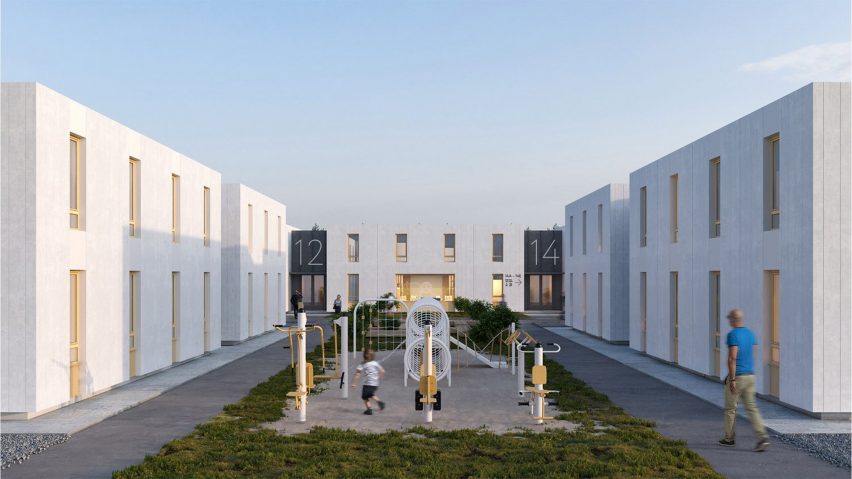
Ten designs for the global refugee crisis including shelters and female hygiene inventions
To mark this year's Refugee Week, we've rounded up 10 designs that aim to make a positive difference in the lives of refugees.
The current global refugee crisis has seen more people forced to flee their homes than at any time since the second world war.
Refugee Week began in the UK in 1998 and has evolved into a festival that celebrates the contributions to society of those who arrived seeking sanctuary.
This year's event comes as the refugee crisis has been thrust under the media spotlight following news that an estimated 9.7 million people have fled Ukraine as a result of the Russian invasion.
From a triangular day shelter for migrants to a safe portable toilet for women in refugee camps, these projects show how designers and architects are working to help displaced people and asylum seekers.
Below are 10 designs from Dezeen's archive that address the refugee crisis:
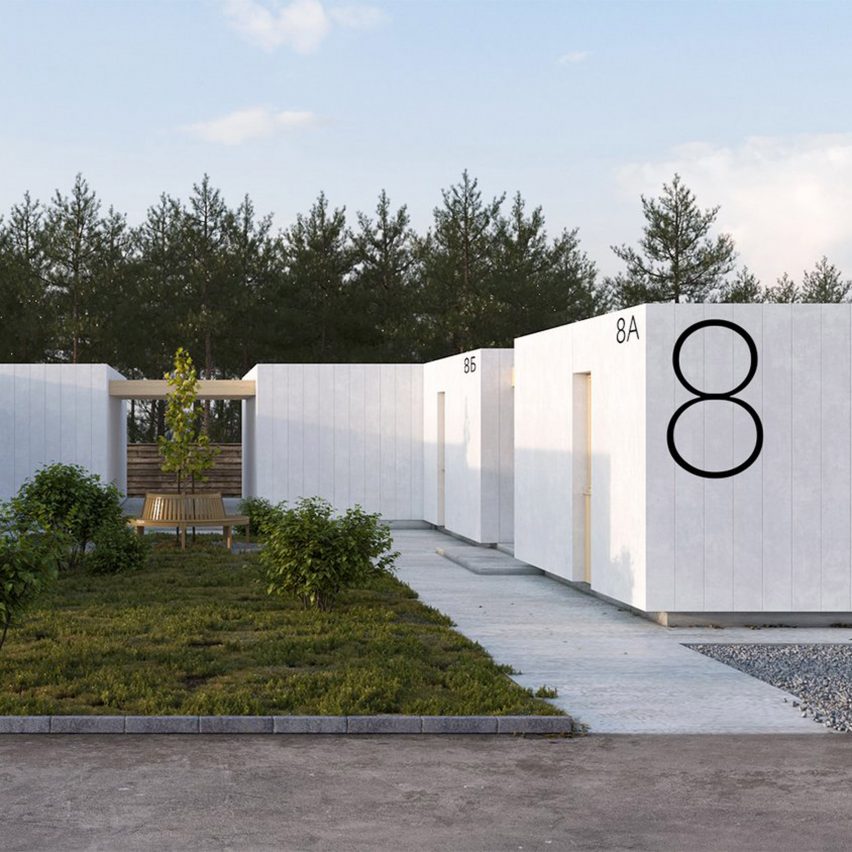
Re:Ukraine, Ukraine, by Balbek Bureau
Composed of modular timber-framed boxes, the Re:Ukraine housing scheme is a temporary shelter complex being developed by Ukrainian studio Balbek Bureau. It is designed to house Kyiv locals while their homes are being rebuilt following Russian shelling.
The proposed modular refugee village has the support of Ukrainian president Volodymyr Zelensky, who recently met with the architecture studio to discuss how the project might serve those who have fled to the relative safety of western Ukraine.
Find out more about Re:Ukraine ›
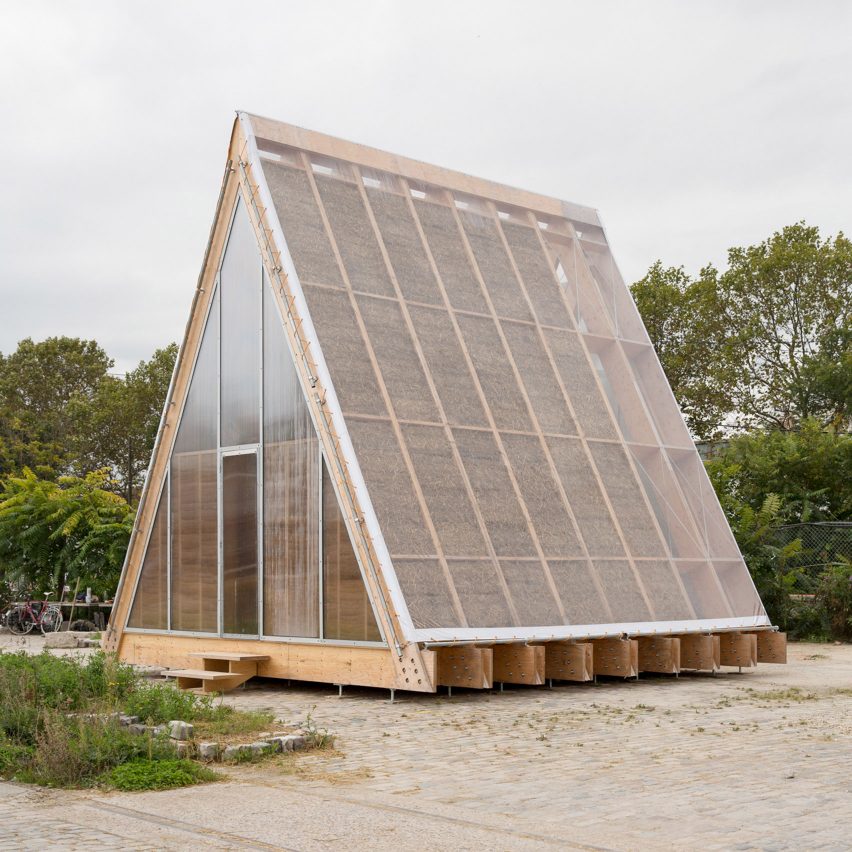
Aire de Repos, France, by Atelier Craft and ICI!
Currently situated at La Station Gare des Mines in Paris, this triangular day shelter has a modular timber frame that allows it to be demounted and moved to different sites.
French studios Atelier Craft and ICI! created the shelter for young migrants and refugees in the French capital who can use the flexible space to participate in psychological support sessions, socialise with peers and take part in cultural activities.
Find out more about Aire de Repos ›
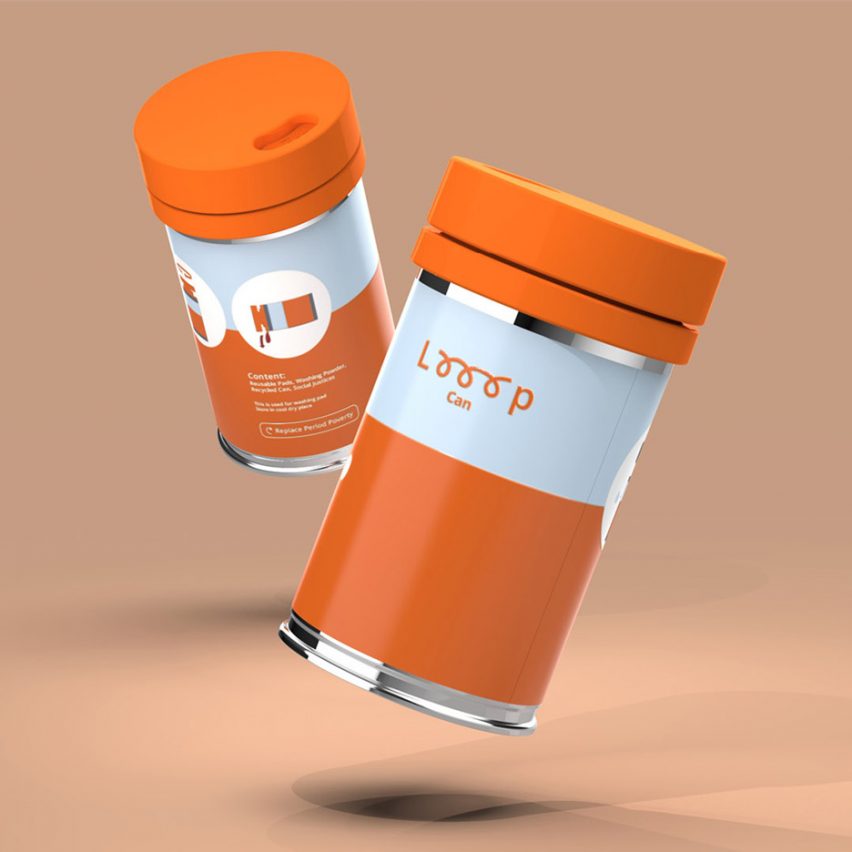
Product design student Cheuk Laam Wong created this portable cleaning kit in a bid to reduce period poverty among refugees, many of whom don't have access to washing machines in refugee camps.
Called Looop Can, the kit includes a reusable bamboo-based sanitary pad, a recyclable can that washes menstruation pads with baking soda and 500 millilitres of water.
Find out more about Looop Can ›
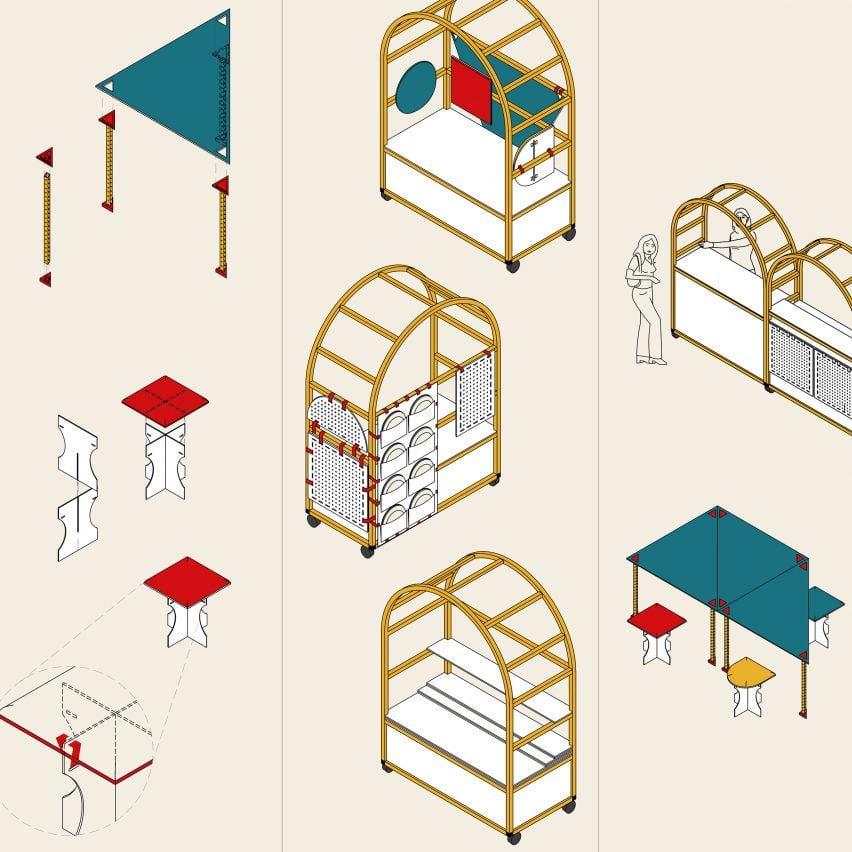
Migrant Living/Nomadic Domesticities Soup Kitchen, UK, by Soup International
To help asylum seekers and refugees that are unable to cook in their refugee camp, graduate collective Soup International designed eight portable and multifunctional community kitchens.
The proposed kitchens were designed for the Southwark Day Centre for Asylum Seekers, which required cooking facilities that could easily be set up and dismantled for use at the centre's other venues.
Find out more about Migrant Living/Nomadic Domesticities Soup Kitchen ›
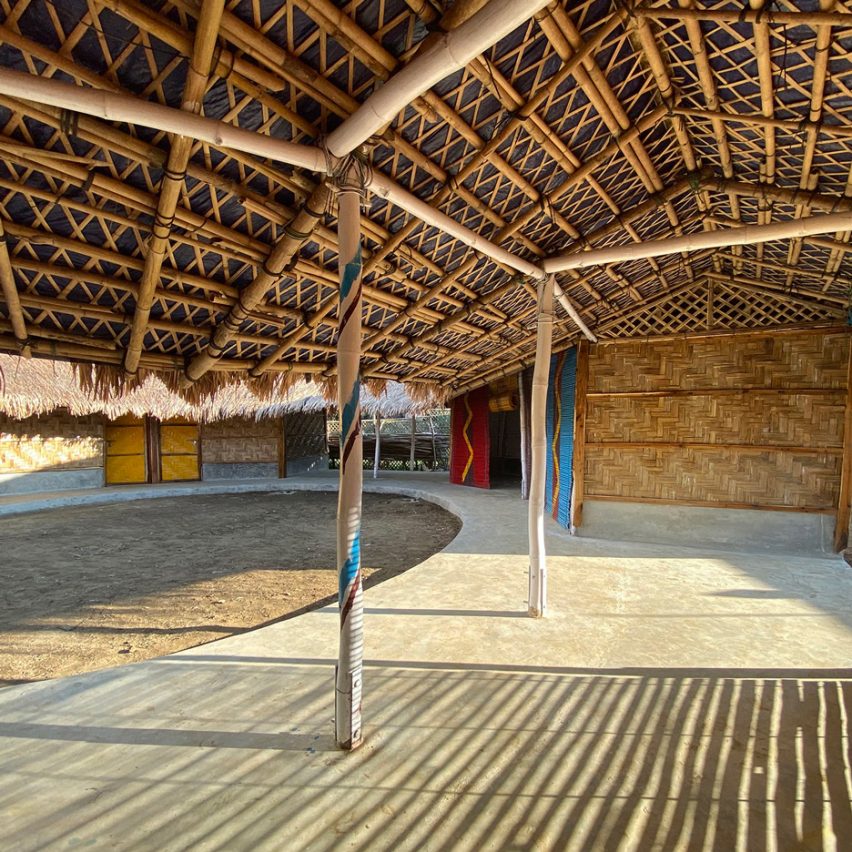
Beyond Survival: A Safe Space for Rohingya Women and Girls, Bangladesh, by Rizvi Hassan
Basic materials such as woven bamboo walls, straw thatching and tarpaulin were used to build this temporary shelter for Rohingya women and girls living in a refugee camp in Camp 25, a refugee site in rural Teknaf, Bangladesh.
Arranged around a sheltered circular courtyard with a hole in the roof that opens it up to the sky, the structure provides places for women to bathe, breastfeed and have counselling.
Find out more about Beyond Survival: A Safe Space for Rohingya Women and Girls ›
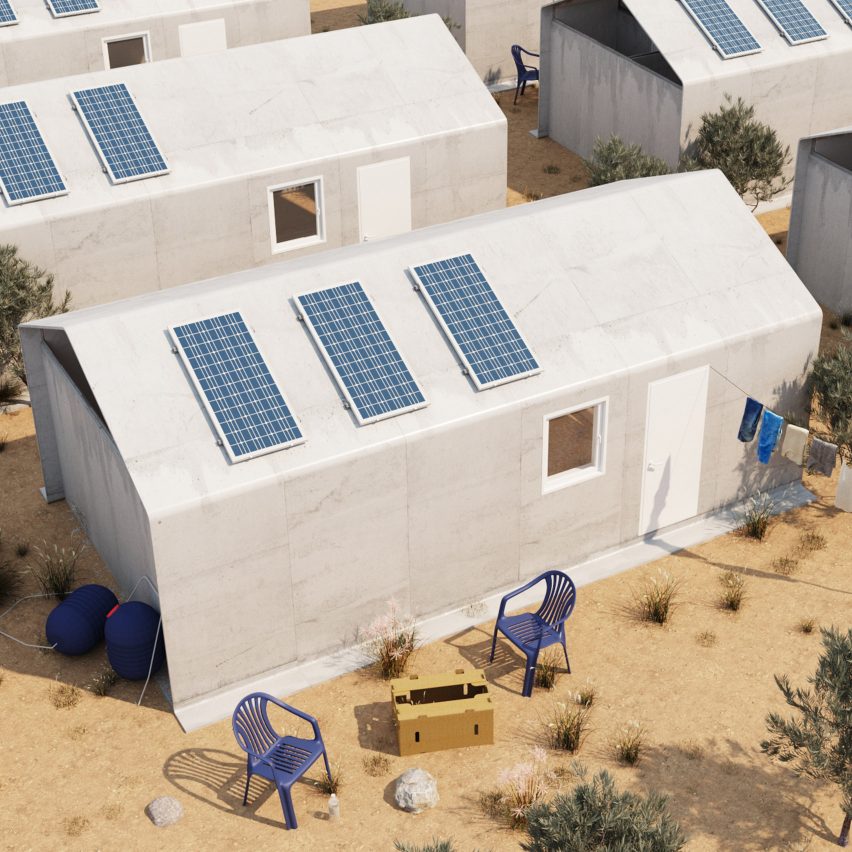
With room inside for a bed, kitchen and bathroom, Cortex Shelter is a structure made from Cortex Composites, a flatpack concrete sheeting that can be unrolled into place and hydrated with water to set into a permanent form.
Designed to house refugees in refugee camps, it can be built in a day by just two people. Conceptual architecture studio Cutwork hoped that it could be used as an alternative to the long-term tent cities that many refugees are currently living in.
Find out more about Cortex Shelter ›
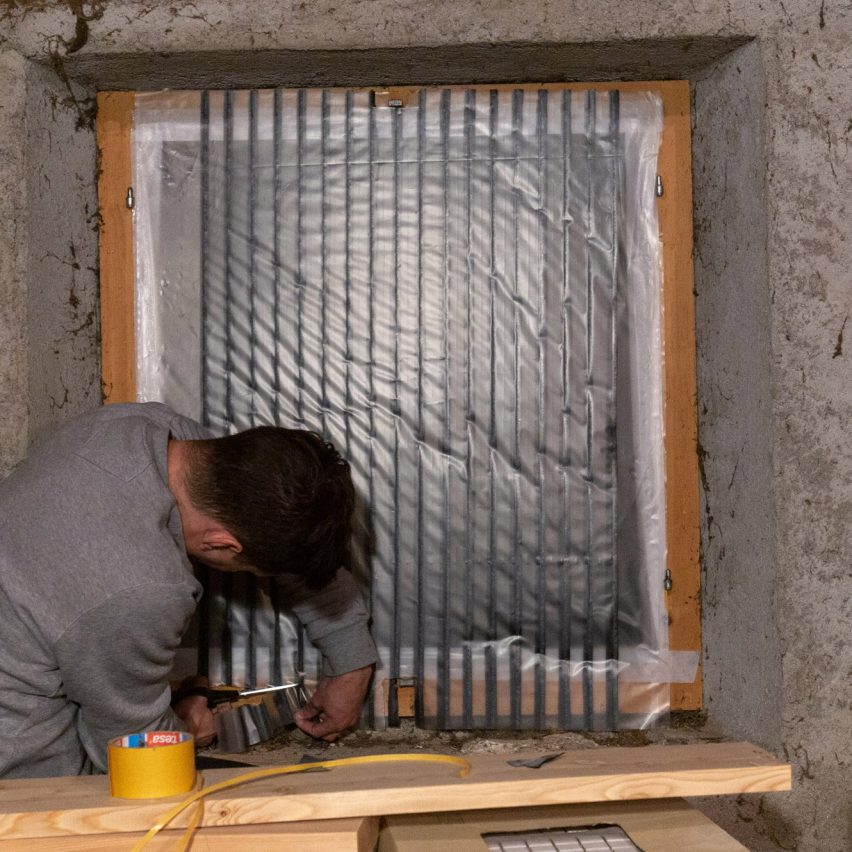
Swiss designer Reto Togni developed a temporary window called Instant Windows that can be easily installed in damaged houses in conflict zones.
Designed to offer the same level of insulation as a single-pane glass window, Instant Windows are made from a cling film-like sheet that can be unrolled and affixed to empty window frames with adhesive tape.
Find out more about Instant Windows ›
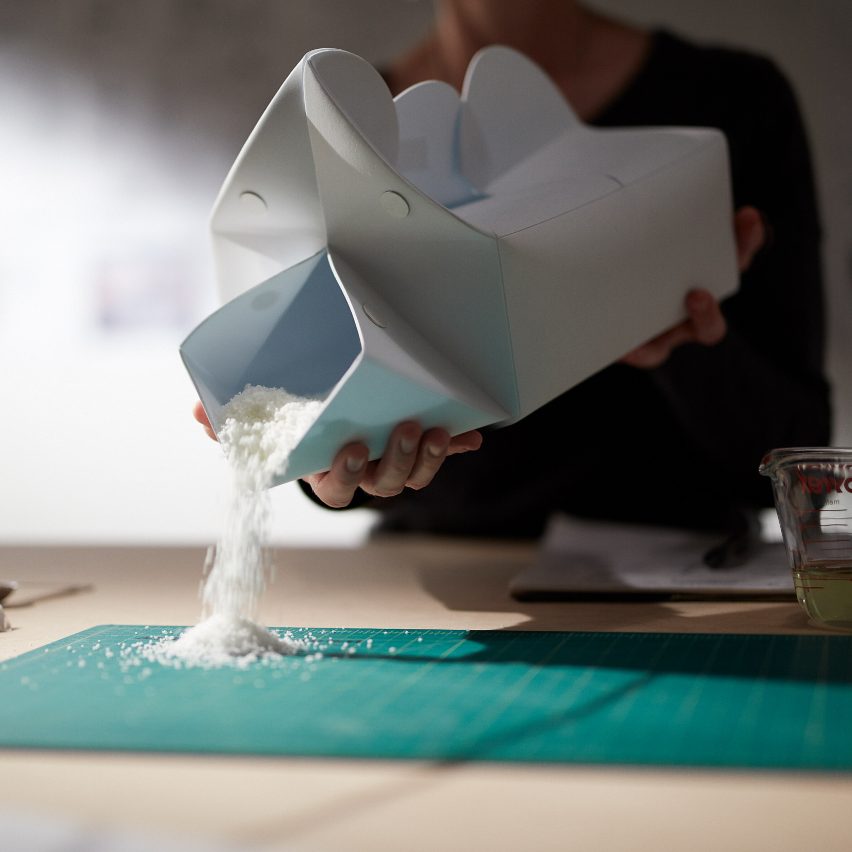
This silicone container by American designer Anna Meddaugh is a personal, portable urinal that women in refugee camps can use at night. Users pour a sachet of super-absorbent polymer beads into the toilet box after urinating, which soaks up any liquid or odours.
Meddaugh was prompted to create the prototype after learning that many women avoid eating or drinking at night or have to resort to using adult diapers to avoid having to use the outdoor facilities where they can be faced with the threat of sexual violence.
Find out more about Night Loo ›
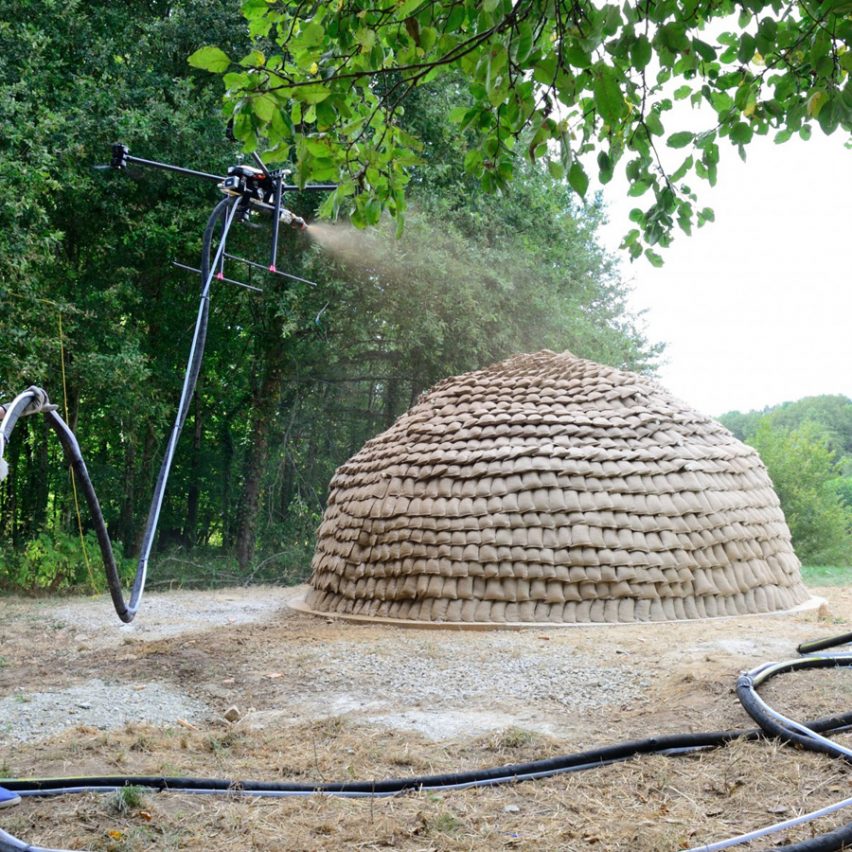
Mud Shell by Stephanie Chaltiel
Mud Shell by French architect Stephanie Chaltiel is a sturdy domed shelter that is coated in a waterproof mixture of clay and fibre using a drone.
The drone application technology enables the shelter to be coated fully in just four days, compared to the weeks it would take to coat by hand. This fast construction method could be used in refugee camps and disaster zones.
The framework of the shelter is made from little sacking bags of hay attached to a wooden lattice arranged in a dome shape. The coating binds the structure together, making it durable, weatherproof and permanent.
Find out more about Mud Shell ›
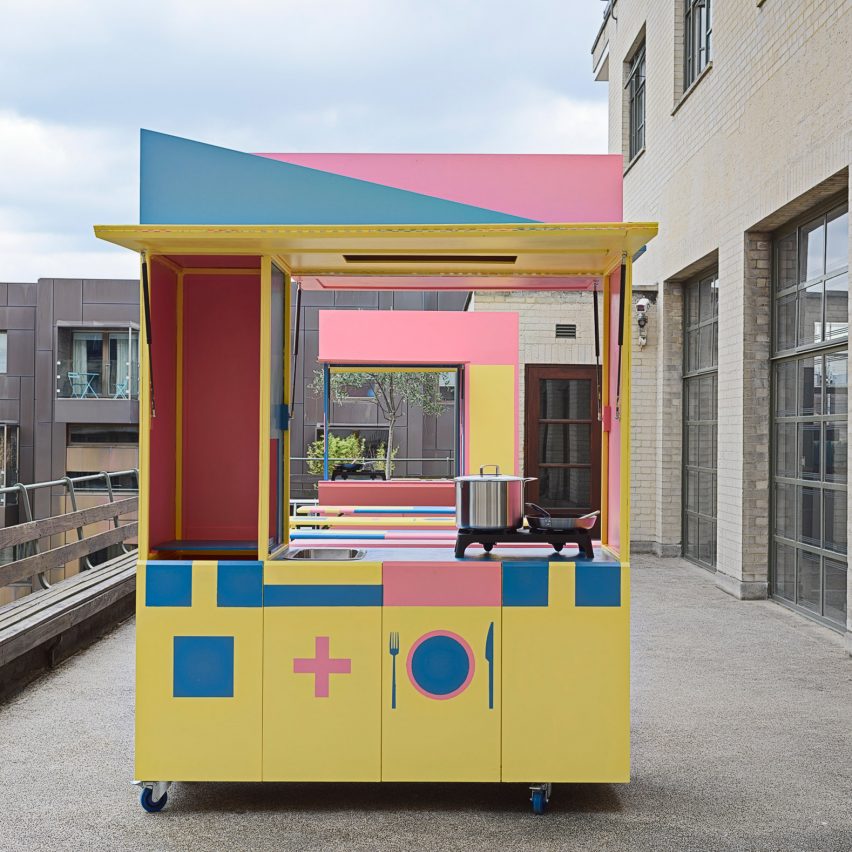
Befriending Kitchen, UK, by Merrett Houmøller Architects
This brightly coloured mobile kitchen and pop-up dining facility is designed to bring young asylum seekers and refugees together once a week to share a meal.
London-based architecture studio Merrett Houmøller Architects created it for the British Red Cross' Refugees and Befriending Project as a vibrant alternative to the project's previous site in an uninspiring office.
It is comprised of two demountable modules that contain cooking facilities such as a sink and gas hob as well as storage space for the folding tables and benches.
Find out more about Befriending Kitchen ›